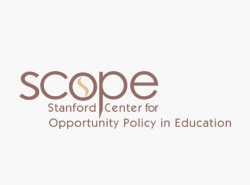Investigating Teaching Policy Around the World
This project examines how high achieving nations around the world have steeply improved student achievement and equity and to identify how those approaches can be replicated in the United States.
This project examines how high achieving nations around the world have steeply improved student achievement and equity and to identify how those approaches can be replicated in the United States.
This study of OUSD's New Small Schools Initiative assesses how the new schools are performing, what factors influence their achievement, and recommends policy strategies that build on current successes.
This project examines large-scale performance assessment in the United States and abroad, including technical advances, feasibility issues, and policy implications.
The Alliance for Excellent Education and SCOPE teamed up to look at ways other nations have enhanced teacher effectiveness and to see if the lessons learned could be applied in the U.S. context, producing a report and a webinar on their findings.
This project examines eight exemplary pre- and in-service program models that address key issues in developing strong leaders.

In this speech, Parent, President of the Centrale des syndicats du Québec, looks at historic and modern trends in Canadian education policy, and their impact on equity in Canadian schools.

In this paper, Ben Levin argues that policy approaches to educational improvement are necessarily different in Canada and the United States, and that greater equity in education can be achieved using practices we already know to be effective.

Mary-Lou Donnelly examines equity in the Canadian education system, focusing on the roles that teachers and teacher organizations play in Canada's high-achieving schools.

Linda Darling-Hammond looks to the practices of high achieving nations and to successes in America's past to address current education policy and the disparities in opportunity for students in the U.S.

Rebecca Pringle discusses ways that unions are collaborating with parents, communities, school districts, and students to improve education and address inequities in educational opportunities for poor and minority students.